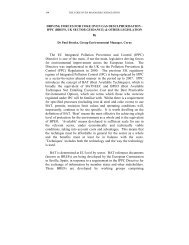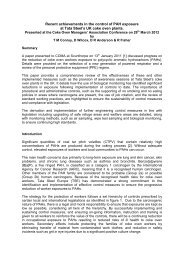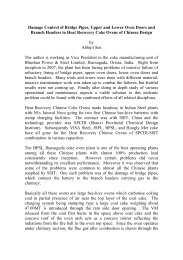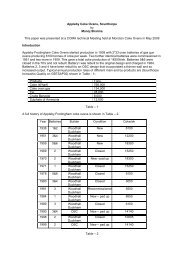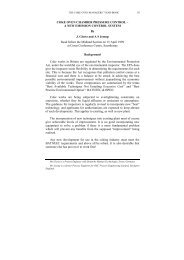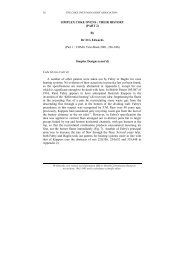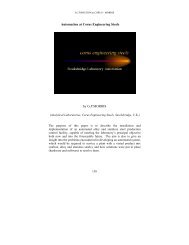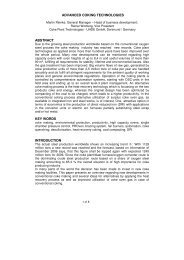CHAIRMAN'S ADDRESS - Coke Oven Managers Association
CHAIRMAN'S ADDRESS - Coke Oven Managers Association
CHAIRMAN'S ADDRESS - Coke Oven Managers Association
- No tags were found...
Create successful ePaper yourself
Turn your PDF publications into a flip-book with our unique Google optimized e-Paper software.
A REVIEW OF C.O.M.A. ACTIVITIES, 1939-1945 - CLARKE 193.are given an electrical charge and then subjected to a strong electrical field,leading to almost complete precipitation of the tar. Examination ofelectrically-precipitated tars showed that they are of lower specific gravitythan the ordinary tar recovered from the plant, and contain liquor of highammonia content together with hydrocarbon oils, large amounts of whichboil in the benzole range and can be recovered with suitable equipment(this system was mentioned in the previous article in this series - C.O.M.A.Bulletin, April 1992, p.l1.). The tars also contain resin-forming materialssuch as coumarone and indene, together with other unsaturated oils andpitch. If such materials were allowed to go forward in the gas stream,thickening of the creosote or petroleum oil used for benzole recoverywould rapidly take place.The author then considered the practical aspects of ensuring efficientrecovery of benzole from the gas, but noted that complete removal couldnever be achieved on the plant, owing to limitations in respect of contacttime between benzole vapour and scrubbing oil, mechanical efficiency ofthe scrubbers and the presence of traces of benzole in the debenzolised oil.In discussing topics such as scrubber design and the counter-currentprinciple of gas washing, oil circulation requirements and the maintenanceof low oil viscosity in relation to benzole recovery, the author stressed theimportance of adequate cooling of both gas and oil, but drew attention tothe need for the oil to be maintained at atemperature 1 to 2 0 C. above that of the gas, to avoid water deposition.Efficient recovery of benzole from the gas demands the circulation ofappropriate volumes of oil, and to illustrate the importance of temperaturein the process, the author presented a graph relating to practice at hisworks, which showed how the oil requirement increased from 55 gallonsper 10,000 cu. ft. at a washing temperature of 10 0 C. to 110 gallons at 25 0 C.in order to maintain efficiency, and posed the question “How manyoperators double the oil in circulation during the hot summer months?”. Agood wash oil should have a high capacity for benzole absorption, a lowviscosity to facilitate oil circulation and covering of the scrubber grids, lowspecific heat to assist in heating and cooling operations, low volatility toreduce distillation loss and a specific gravity which allows of readyseparation from any water present, thus preventing the formation ofemulsions. The oil should be resistant to sludge formation and also tochanges in its characteristics when subjected to repeated heating andcooling.



